#daily bestiary
Explore tagged Tumblr posts
Text
Jackson's Daily Bestiary #8: Kappa

Image credit: https://www.reddit.com/r/yokai/comments/kldsye/hi_i_am_an_artist_specialised_in_japanese_fantasy/
Region of Origin: Japan
Kappa are mythical creatures from Japanese folklore. They are what is known as a Yokai, a classification for japanese monsters, spirits, etc. The word Kappa means "River child". They have appeared in many japanese folktales and legends, with many regional variants for its name, such as Kawataro, Gataro, etc, and they feature prominently in pop culture to this day.
They are short, reptilian-like yokai with webbed hands, a duck-like bill, a turtle-like shell on their back and a round dish formation on their heads known as a "Sara". This Sara is the source of the Kappa's power and must constantly be filled with water, otherwise the Kappa will be weakened, potentially even dying.
Kappa are mischievous yet dangerous creatures. Despite their small size, they have impressive strength, which they often use to drag people and animals into the water in order to extract a special organ through the anus. This organ is known as "Shirikodama" and is said to contain the human soul. They also often causes diseases and rape women.
They can, however, be defeated. For instance, one can save themselves from a Kappa by throwing a cucumber, which the Kappa are fond of and will chase, thus giving people the chance to escape. One can also defeat a Kappa by making it spill the water on its Sara. This can be done by bowing to a Kappa, who will be forced to bow back, thus spilling the water. They also love sumo wrestling against humans, which they always win at unless they are outsmarted.
Sources:
-https://www.nippon.com/en/japan-topics/b02505/
-https://www.tofugu.com/japan/kappa/
-https://en.m.wikipedia.org/wiki/Kappa_(folklore)
-https://skdesu.com/en/kappa-youkai-juice-and-cucumbers/?_gl=1*14qzouu*_ga*UU9VZUo4NU42YWYwSzZEeW9hT2FxOW9vMExydkVycXIzd0lKX1I3Nkd4Um5BMEhCSE9oOEE5eGRXVUJJcjcySQ..
-https://yokai.com/kappa/
28 notes
·
View notes
Text


Arthur Sue or Molly Sue or Mordred or others
20, genderfluid bi femme, white+tme, it/its or she/her
Art blog @draugrfriendart
Death enthusiast, history student, oc derangement haver
Posts tagged with "thing: name" are for my ocs, posts tagged with just names are for my mutuals :] nova is my cat, éclair and snickers are my parents' cats
Mutuals can ask for my personal insta and discord, adult mutuals can ask for my nsfw blog
Byf/Sideblogs/Pronouns page under cut

Byf: death and death related things feature heavily around here, I don't tag fag, dyke, or queer, I don't tag mild blood, I do tag mutuals' personal tags, bugs, strong blood/gore, and flashing/similar, any other post you need tagged just send an ask and I'll tag it
No formal dni, my stances should be clear and you can decide for yourself

Sideblogs:
Aesthetics:
@barrowwife
Interests:
Skyrim: @shorstone Dragon Age: @onelessvenatori Tolkien: @gimligf
Writing:
Worldbuilding project blog: @talesfromtheshatteredlands
Oc Rp:
Peach: @new-romances


Pronouns:
Neocities*:
*Site version 2.0 Currently under construction, but the link does still work for the sake of my links

Bonus:
#tag directory:#eulogy#<- talk tag#rainbow road#<- shared oc verse with very cool and wonderful friends#bestiary#<- go look at some animal videos#self explanatory:#aes#mecore#my art#daily songs#undeadposting
4 notes
·
View notes
Text

Y'all should come rest your heads on Alastor's bulgin' mantiddies.
7 notes
·
View notes
Text
Ok but what if PIDW instead of a novel was a webcomic
That's the only difference
Shen Yuan would definitely get more dirty comments about how he's sick of seeing so many badly colored nipples and physically-anatomically impossible sexual poses instead of a pixel of plot. They've been the same scene for over fifty pages and Luo Binghe still hasn't penetrated his wife #179, please Airplane, stop it
Of course Airplane would be like: try to draw ten pages of this shit a day Cucumber-bro, and fuck you
There is a conspiracy theory that Airplane is actually a lot of artist working under a only pseudonym because it is inhumane to publish ten pages a day completely colored (almost always of only sex), and while the use of 3D sets and props is obvious at times, it IS a polished piece of art sometimes (with too much emphasis on Luo Binghe how, obviously, and too much emphasis on Mobei Jun's titties in the background)
No, Airplane is just one person, but he likes things like paying his rent and eating so much that he doesn't do anything other than draw daily, recycle poses, use lots of 3D tools and only sometimes fight with Peerless Cucumber in comments
Everything else works and is handled the same. The only difference is of course, it is a webcomic and not a webnovel. Shen Yuan is outraged that Airplane didn't use that AMAZING ability to draw monsters to make a bestiary. Every scene of the Abyss, every monster, every battle, is so neatly drawn that Shen Yuan sometimes just stares at the images for MINUTES admiring the details, absorbing them. But of course these are scenes that last like, half a page and then there are more boobs and thighs with a shitty pink blush. Fuck you Airplane.
#svsss#svsss ideas#svsss au#mxtx svsss#scum villain's self saving system#scumbag villain self saving system#scumbag system#shang qinghua#shen yuan#airplane shooting towards the sky#peerless cucumber#enemies to transmigrated forced friends
247 notes
·
View notes
Text

8-Bit Bestiary: Big-Claw Crab
(Originally created 8.10.24 for Pixel Dailies theme "claw")
252 notes
·
View notes
Text
The Lost Bay comes to life!!!
Hey folks, in the next few weeks I'll be launching the crowdfunding campaign for The Lost Bay, a dark fantasy tabletop RPG set in 199X.
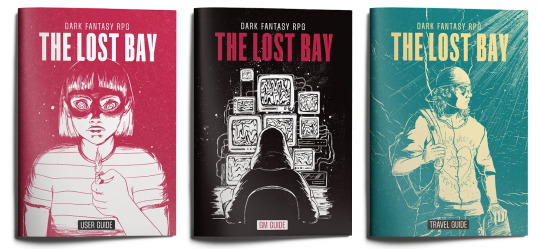
I've been working on it for years, and thanks to the feedback and support of the numerous folks who played the early access version, the game is now ripe to go to print.
But what is it exactly?
The Lost Bay is a dark fantasy tabletop RPG. It’s set in alternate 199X. The Lost Bay is also the name of the game setting, a small coastal suburb, both familiar and uncanny, where the mundane and the magical mix inextricably. Living Saints, rituals, blood curses are part of the characters’ daily life alongside console games, VHS tapes, and phone booths.
The Lost Bay is a set of three booklets. It contains everything you need to play: character creation, core rules, advanced tips and toolkits, detailed setting and bestiary.
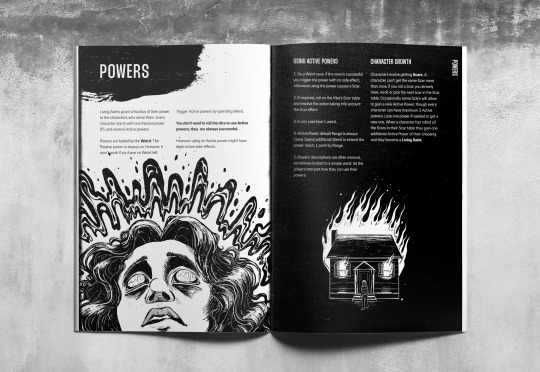
The cool thing is that you get to play powerful characters, roaming in a weird and at times dark world.
The system in a nutshell
Three attributes, and a d6 dice pool for all your Action Rolls or Saves.
One resource to fuel your Powers.
Powers always succeed but can get you a Scar.
Scars can hurt you, make you more powerful, or change you. They are specific to each Vibe.
If you get all the Scars and you manage to survive them, you become a Living Saint, an immortal roaming the Bay. YOU become the Lore of the Bay.
What’s in the books?
User Guide: character creation and core rules, ten playable classes, three post-death special classes, custom character growth, Scar tables.
GM Guide: tips and toolkits, advanced rules, adventure building frameworks, examples and designer commentary.
Travel guide: extensive ready to use setting, exploration procedures, pre-gen point-crawls, six full-fledged districts featuring: locations, NPCs, Bosses, complications, rumors, treasures, adventure seeds.

If this sounds cool to you stay tuned for more updates about the game, or follow the Kickstarter page to be notified on launch
If you have any questions about the game feel free to fire them, I'd be happy to answer. And if you want to try it come and say hi on The Lost Bay server, we play the game regularly, and I even do 60minutes intro to it for folks who just want to give it a quick try https://discord.com/invite/37XBQVr7eP
Cheers
Iko
#indie tabletop rpg#indie ttrpg#indie rpg#tabletop rpg#horrorrpgs#osr#dark fantasy#game design#90s#suburbia#suburban#suburban gothic#suburbangothic
56 notes
·
View notes
Text
Starting over challenge
Hello tumblr friends! I haven't been on here in a hot minute. Kind of lost interest in FR and didn't play much. But earlier this year I started a new challenge so I am back on the grind! I have always liked the idea of starting over and I really wish we could wipe bestiary entries and somewhat start clean. After going back and forth on this issue, I decided to just make my own starting over challenge. Here are my criteria for completing the challenge:
I have recollected all familiars excluding the 4 Kickstarter familiars, Red-Footed Akirbeak & Boolean
I have 20 gen 1 dragons leveled, dressed and gened up that I like
I have 5.000.000 treasure and 5.000 gems
I started the 15th of the month with an empty hoard, no treasure/gems and with my dragons in the hibernal den. I hatched 3 eggs to make a new coliseum team and they are the only dragons I currently have. This is going to be a very looong project, but it gives me something to do and work towards which I really need in order to keep playing/enjoy the game. I post daily updates in my thread so if you are curious, feel free to take a look! https://www1.flightrising.com/forums/qnc/3391485
10 notes
·
View notes
Text
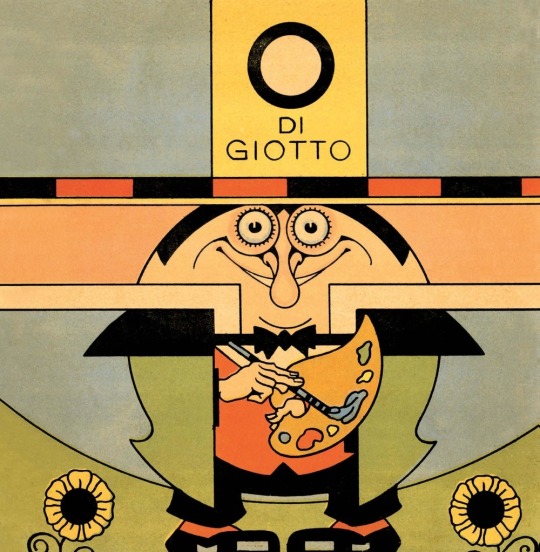
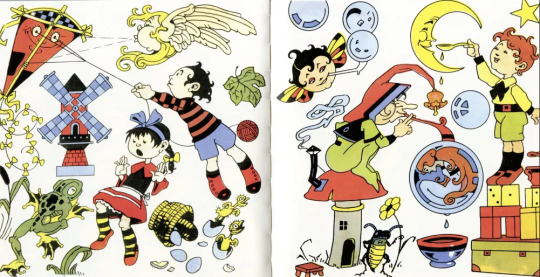

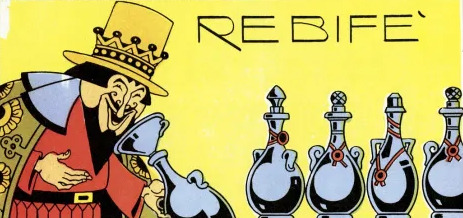
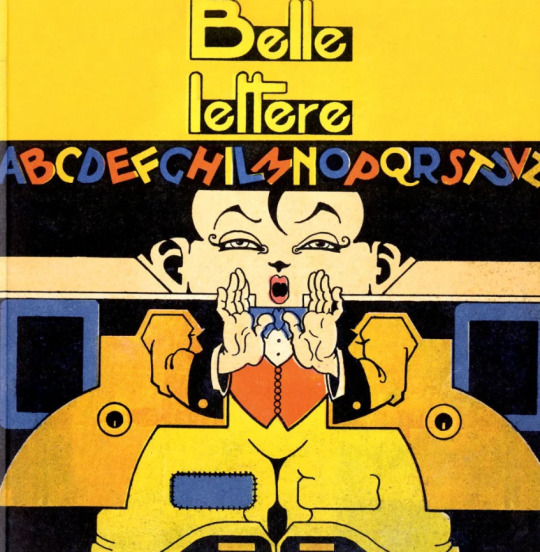
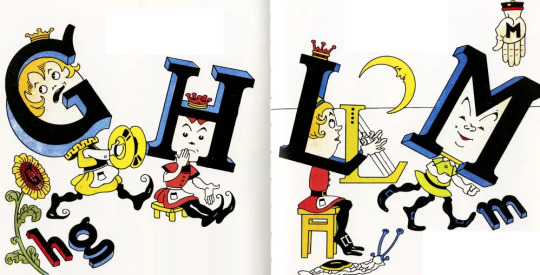

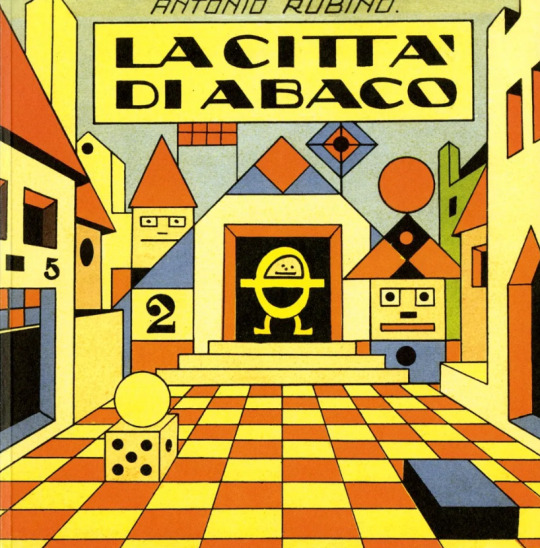
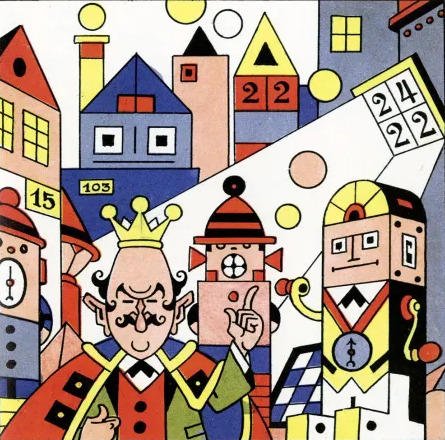


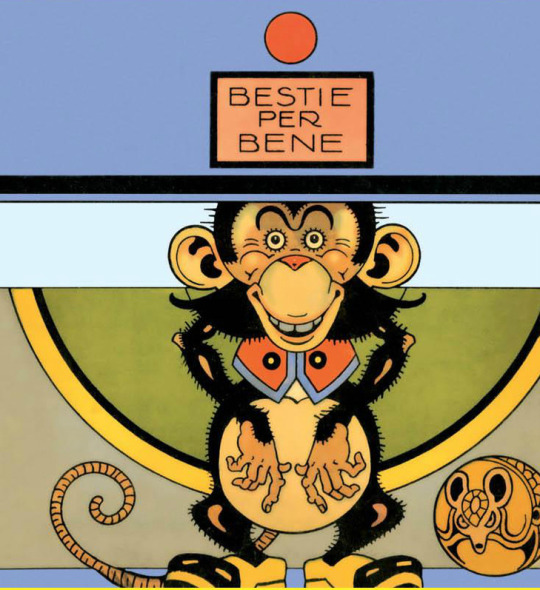
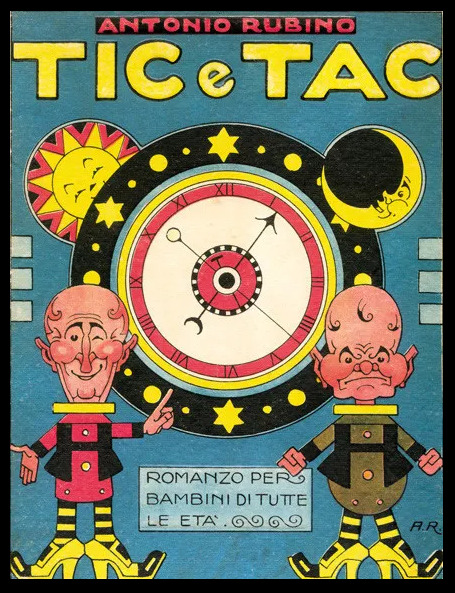



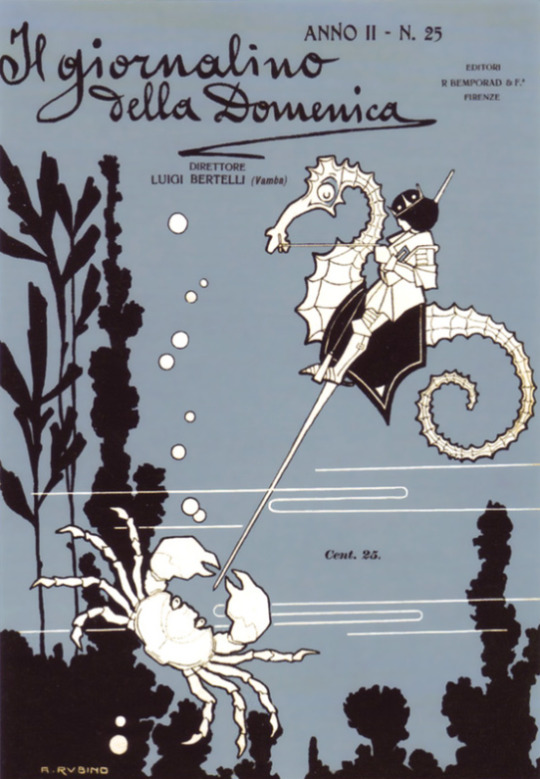

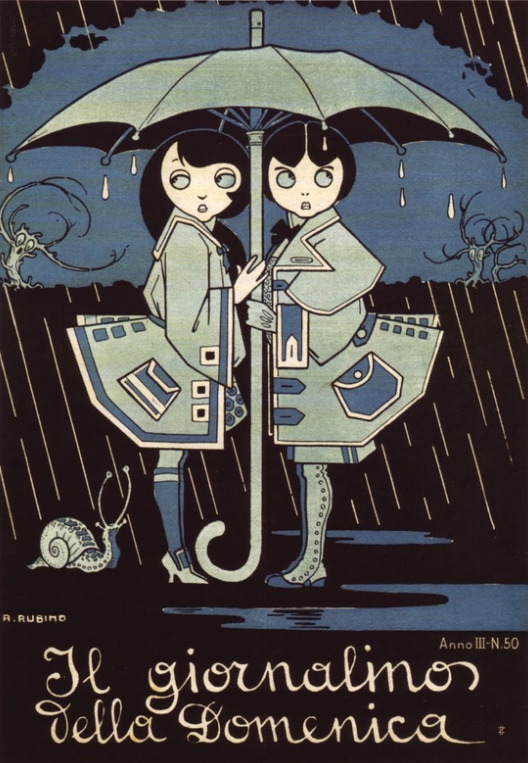


Antonio Rubino (Italian, 1880–1964) - painter, writer, illustrator, designer, and animator considered the father of Italian comics.
Covers and interior illustrations for The Toy School — a series of six color albums designed as a vade mecum, each album being responsible for introducing children, not without irony, to the things of life. There we find an alphabet book, a book of algebra and geometry, a bestiary, a chooser, a fable and an edifying tale. Of these six albums, O by Giotto is a visual dictionary of familiar objects but also a reflection on creation.
O DI GIOTTO (O by Giotto) - 1927
RE BIFÈ (King Bifè)
Belle Lettere (Beautiful Letters) - 1928
LA SCUOLA DI SCARABOCCHIO (The Scribble School)
LÀ CITTA DI ABACO (The City of Abacus) - 1928
IO ASINO PRIMO (Me, First Dunce) - 1930
BESTIE PER BENE (Well Behaved Animals) - 1928
other publications:
TIC E TAC (Tic & Tac) - a novel for children of all ages
VIPERETTA - 1934
undersea scene - sketch for fabric design
MONDO FANCIULLO (Child's World) - poster for his animated cartoon
Giornalino della Domenica (Sunday Newspaper) - Anno II #25 - 1907
Giornalino della Domenica (Sunday Newspaper) - Anno III #14 - 1908
Giornalino della Domenica (Sunday Newspaper) - Anno III #50 - 1908
LA NAVE! (The Ship!) - Here is the ship in stormy sea . . .
Quadratino (Small Square) - comic panel - 1910
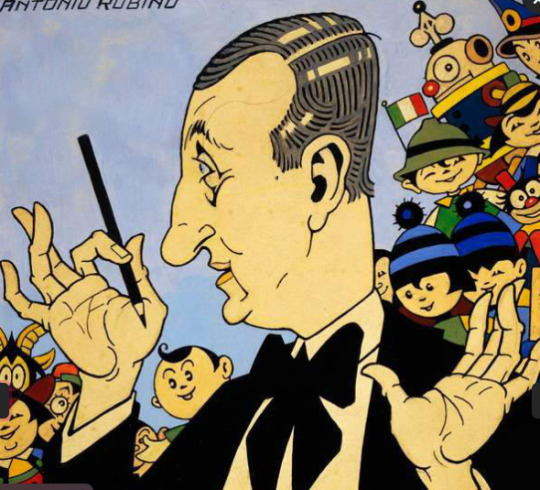
Antonio Rubino Self-Portrait - 1930
www.printmag.com/daily-heller/futurist-wacky-antonio-rubino/ www.50watts.com/Daily-Rubino
#art by others#other's artwork#painting#illustration#publications#Antonio Rubino#tempera#comic#poster#animation
34 notes
·
View notes
Text
Yamaraj (Psychopomp, Paths Beyond)
Paizo loves to draw on real-world myth and religion to flesh out the Age of Lost Omens and these psychopomps are no exception. Yamaraj is one of the names of the Hindu God of Death, who also shows up in many, many other Asian religions and mythologies. While Yamarajes are largely created whole-cloth for Pathfinder as best as I can tell, they share their role as the afterlife's supreme judges with their namesake.
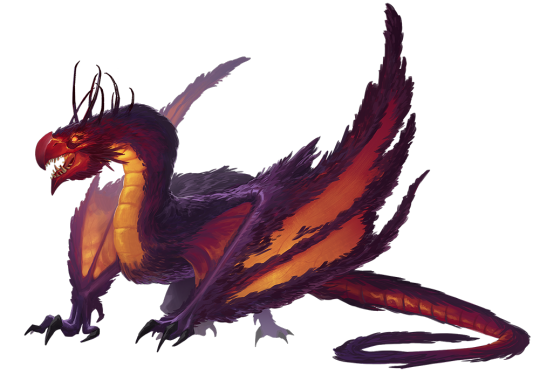
When dealing with psychopomps in general, and yamarajes specifically, it’s critical to remember that, while they have hierarchies, these are not devils. The bureaucracy of the Boneyard is considerably more laissez-faire than that of Hell. Psychopomps follow their hierarchy because if they don’t someone further up, the chain of command might bury them under so much busy work they’d wish they could die. A psychopomp may all be the spirit of the law one day, then the letter of the law of the next, simply because it is convenient. If it gets them the results they believed to be correct, they may not have any qualms about breaking the law entirely.
All this means the yamarajes get a high degree of latitude to deal with problems as they see fit. They are the penultimate step on the org chart, second only to the Ushers and the gods themselves. They are smart, cunning, corvid-dragons of death who heal from lightning and have the scarab swarms from The Mummy ‘99 as their breath attack. You try telling them they’re doing their job wrong. It can be tough to find inspiration for outsiders acting this way, but luckily one series does exist. Daily Bestiary recommended Garth Nix’s Keys to the Kingdom to me a while back and while it’s not a perfect fit for psychopomps (he suggested it re: rilmani), the denizens of the House are a good starting point for getting in the mindset of neutral outsiders.
Rajit the Wayward stubbornly insists that he is not, although the nickname has stuck amongst mortals and his erstwhile colleagues. The yamaraj hasn’t set foot in the Boneyard for nearly 3000 years, proclaiming to anyone who will listen that she has merely taken a short sabbatical and will return to his courtroom soon enough. Even his fellow immortals are skeptical, but Pharasma has made no move to censure him, so the other Yamarajes put up with his truancy. Meanwhile, Rajit serves as one of the few points of stability within the First World realm of Nighthold, dispensing legal advice to those in need. Rajit is just as curious about the fey as they are about the psychopomp, which helps him endure both their shenanigans and treachery. He is one of the easier psychopomps for mortals to approach — if they can make it through the remnants of Count Ranalc’s kingdom.
Like any body of water in the Universe, the River of Souls has its own weather. Shah Jamshid rules over the largest of these storms, riding it up and down the River as he incinerates soul thieves with lightning bolts. The yamaraj's storm doesn't usually disturb the departed, but every few years he must recruit adventurous to track down souls who get blown stray. While irritating, Jamshid justifies these minor interruptions to the River's flow as the price for ensuring daemons and powerful undead don't do worse damage.
Lucius Census-Taker has always been fascinated by swarms. He revels in his breath attack and spends his downtime as an amateur entomologist. Not that he has much downtime - Lucius has taken it upon himself to process the souls slain in the final battles with the closure of the Worldwound. His fascination with all things swarm extends to the dead demon lord Deskari. Lucius is an invaluable resource for parties seeking information on the fallen demigod, but between the bureaucracy of the Boneyard and his dangerous sojourns into the Outer Rifts, he is hard to track down.
#Pathfinder#Pathfinder2e#outsider#psychopomp#Paths Beyond#Plothooks#Worldbuilding#rpg hooks#rpg#Planescape
21 notes
·
View notes
Text
List of EPPRBs (helping Status)
@dailyquests
@mission-board
@status-updates
@loading-tips
@advancement-made
@deathscreenmessages
@monster-bestiary and @bossfight-messages
@nefarious-exclam
@character-selecton (no i)
@item-shoppe
@glitches-and-bugs
@players-guide-to-magic
@beta-leaks
@mini-games
@location-finder
@objective-marker
@unused-questline
@magic-foraging-tooltips
@evil-loading-screen
@character-profiles
@roadside-shrines
@cmd-semicolon
@war-causing-interrobang
@bugged-inverted-interrobang
@hashbang-mods
@percontation-mark
@redacted-exclam
@location-loser
@magical-experiments
@unskilledpoint
@shady-item-shop
@collectibles-menu
@rpg-weather-cycle
@rpg-partylog
@small-cat-npc
@ultrakill-style-bar-updates
@john-tendrils-exclam-the-eighth
@the-tutorial
@big-bad-evil-guy
@system-notifs
@druid-exclam (no im not switching this to html <3)
@sparky-exclam
@trap-messages
@epcuartbook
@story-choices
@trudle-the-faerie
@the-moon-npc
@daily-companion
@slime-wizard-exclam
@virus-thing
@pheriya
@demon-exclam
@combat-menu
@buffs-window
@settinggeneral
@parasiteinfoform-greenstate
@weaponsshop
@level-12-weaponsmith
@level-1-slime
Not punctuation:
@gnome-armada
@demonic-dev-blog
Also check out:
@epprbcu-incorrect-quotes
@correct-epprbcu
@the-multiversal-asterisk
@epprb-art
@solidwater05
Let us know you exist so you can be added:
109 notes
·
View notes
Text
Book Review: Pathfinder 1E Core Rule Book
And so we begin something I’ve been meaning to do for a long time: Book Reviews!
In this special, I’ll be taking a look through various Pathfinder and Starfinder books that I own and generally talk about Their content, their artwork, and other things that offer pros and cons about them.
And what better way to start than with the Pathfinder core rulebook!
Ah yes, the storied ancient times of 2008. I had just graduated high school and was getting into community college. Before that point, Pathfinder had already been writing adventures for 3.5 D&D as a strange and controversial ploy to tap into the market of RPG gamers that had rejected 4th Ed. However, they had no intention of stopping there, starting with their Core Rulebook, which took the info in the Player’s Handbook and Dungeon Master’s Guide of D&D 3.5 and revised it in preparation for the launch of their very own system and products.
What was tricky about this was that some things, such as summoning spells, had to be designed for a book that was technically not out yet: the Pathfinder Bestiary, so the writers had to figure out what monsters were going to be in the Bestiary but not be shared with the Monster Manual counterpart (which is why the 3.5 PHB has all the different sizes of giant spider/centipede/scorpion on them whereas Pathfinder did not, for example).
All in all, this was the effective launch of a new product off the bones of an old one, which really hadn’t been done to this scale before, pushing the limits of what was outlined by the OGL. It was rare, fun, and exciting times, and nobody can claim that Paizo didn’t succeed in that regard.
But let’s get down to it with the actual content of the book!
Now, it’s going to be literally impossible to list the content of the book without comparing it to the D&D work it was based on, so I’m not going to even try there, but first off, compiling the Player’s Handbook and DMG into one book was a good move on Paizo’s part, for while it made for a hefty volume, it was still less expensive to prospective GMs than the PHB/DMG/MM combo of D&D.
Inside, the actual content works hard to refine the formula of 3.5, developing a design philosophy that rewards the player for sticking with things instead of punishing them for diversifying. Favored classes are now picked by the player on start with no restrictions, and said favored classes reward you with bonuses rather than reducing skill points.
Speaking of which, skill ranks are no longer super costly for going outside your class skills, and while you get numerically less, they reward much more, giving bonuses for the class skills as well. Furthermore, the skills themselves are consolidated, with several being merged into one skill (such as Spot, Listen, and Search all being Perception now)
Furthermore, Classes had all been refined as well. Pathfinder introduced new versions of old abilities, such as making certain class abilities available for a number or rounds per day instead of daily uses of variable value that then run out, such as barbarian rages and bardic performances. Meanwhile, clerics gained the vastly superior channel energy, and if they actually wanted turning/rebuking undead in their arsenal, there were feats for it, and the system for doing so was simplified compared to the frankly absurd original system. And then there were quality of life tweaks like giving druids, paladins, and rangers options for not having animal companions (and making companions much more clear-cut), barbarian rage powers, rogue talents, and the like, and of course, giving sorcerers bloodlines to really help diversify them. (Not to mention giving sorcerers and wizards better hit dice so they don’t keep dying at first level.)
Meanwhile, while feats remain a core part of the system, they made little tweaks to old favorites and added important new options, including something as simple as “have another rogue talent” or “have more rage rounds per day”.
And spells! The spells in the Core Rulebook are pretty much all lifted from the PHB, but their design aesthetic was shifted, with save or die spells dealing massive damage instead of instant death (protecting player characters and monsters alike), while the polymorphing spells were much more balanced: adding set abilities at certain levels instead of just letting you become anything and potentially break the game with an encyclopedic knowledge of the Monster Manual, alongside other quality additions.
And moving on from the player-centric options, the GM stuff is somewhat stripped-down, but still very important, ranging from advice about how to build encounters to NPCs as well as general environmental rules and the like, all very fun and important stuff.
Throughout the book, the art also really helps convey the aesthetics and vibe of the world of Pathfinder, with not just primary Pathfinder artist Wayne Reynolds, but a dozen or so other artists as well. Additionally, the art helped bring to life the example “iconic” characters that became the stand-in representation of typical members of each class. Admittedly, a lot of this art is borrowed from the 3.5 books that came before it, but we’ll forgive that. It was their first book of an entirely new system, and that borrowed art was pretty dang good.
Additionally, each chapter sports an opening with a few paragraphs describing the scene of the chapter splash art, which really conveyed that the iconic heroes depicted therein were, you know, characters with personality, not just example art. Which I feel is an important thing when trying to depict a game where players are meant to bring their own characters to life. (I should note that Seltyiel, the iconic eldritch knight, and later magus, was the only one of the prestige classes to be considered a true iconic with his own lore, while the others were only just character art. Probably because he was specifically F. Wes Schneider’s baby).
Overall, the core rulebook has a lot going for it. It took everything we already knew from 3.5 and refined it to be less forcing players to build their characters in certain ways via punishment, and more rewarding them for choosing to build their characters a certain way, while also balancing and changing assumptions about certain feats, spells, magic items, and even the underpinning of how XP was awarded and NPCs were built. Not to mention all the effort to make it seem like the underpinning of a living world through the art and descriptions (name one thing about Pelor in D&D other than his domain list and the fact he’s a neutral good sun god. I dare you).
Now, that isn’t to say that it’s all peachy keen, though. In their efforts to make the core book mostly setting neutral, the core book fails to give more than a few paragraphs about the planes, which is fair, they were still hashing out their cosmology at the time. Additionally, a lot of the book’s novelty at the time was based on the changes that it had made to various otherwise familiar things. Some of that impact is lost if Pathfinder is the first RPG you pick up, and for all it’s simplifications, Pathfinder remains a very crunchy game with a lot of moving parts (I still get new players that struggle parsing the fact that “natural armor” is an entirely separate bonus and not a specific type of armor bonus), all of which can make it much more intimidating to get into compared to 5e (i.e., the one thing that 5e has over either edition of Pathfinder.)
And I think that will do for today. If there is any final thoughts I have, it’s that for it’s humble beginnings as a new system which was little more than a revision of an older one, the core rulebook was, and remains, an important lynchpin of the system (the core book being important? Shocking.), but as we do more of these reviews, we’ll also see how other books shaped the system and the lore. Look forward to more this week and in the future!
14 notes
·
View notes
Text
Jackson's Daily Bestiary #14: Thunderbird
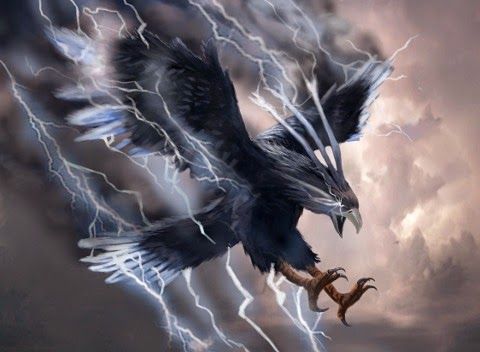
Image credit: https://www.legendsofamerica.com/thunderbird-native-american/
Region of Origin: North America
Thunderbirds are giant birds of Native American mythology, found among the legends of many tribes in North America, particularly those of the Great Lakes region. They are called Thunderbirds because they are said to cause thunder with the flap of their wings and produce lightning from their eyes.
They are said to be large enough to carry off whales in their talons and eat them. Many tribes consider them sacred forces of nature, as they would bring the rain and thus cause vegetation to grow. They may also sometimes be accompanied by lesser spirits in the form of smaller birds and falcon.
Many legends depict them as being constantly engaged in war with evil spirits of the underworld. In Algonquin legends, they are the ancestors of the human race and mortal enemies of the water panther Mishipeshu. In Ojibwe myths, they are moral enforcers created by the culture hero Nanabozho in order to fight underwater spirits.
Sources:
-https://en.m.wikipedia.org/wiki/Thunderbird_(mythology)
-https://www.legendsofamerica.com/thunderbird-native-american/https://
-https://www.britannica.com/topic/thunderbird-mythological-bird
-http://www.native-languages.org/thunderbird.htm
-https://www.historydefined.net/thunderbird/
#jackson's daily bestiary#mythology#folklore#native american mythology#algonquin#ojibwe#Thunderbird#north america#legendary birds
22 notes
·
View notes
Text
Sen. Sheldon Whitehouse tells it like it is: 'one crew, one plan, one cancer in the body politic'. (Daily Kos)
I'm cutting and pasting this text from one of today's Daily Kos newsletters that land in my inbox. I think that Senator Whitehouse is possibly the smartest senator among the 100. He's a Democrat from Rhode Island and always has the smartest and bravest observations when matters are particularly ugly.
"Below is an unrolled string of tweets from Democratic Sen. Sheldon Whitehouse about our political predicament. More of our Senators should be talking like this and joining Whitehouse’s relentless attacks on the corruption and authoritarianism eating away at democracy.
Our current situation should give Dems a rejuvenating chance to focus better on fixing what’s gone wrong in America.
We face three huge threats: persistent internal attacks on our democracy, unbridled climate upheaval, and a captured Court with some deeply corrupt justices
Behind each threat is dark money; massive anonymous political spending by special interests who hide their identities from the public.
The political class has reoriented itself to this new reality, pivoting to the big secret spenders. Voters notice they’re not so important anymore. An entire dark-money ecosystem has been spawned, with front groups, ‘Donors Trusts,’ coordinating 501c3s and c4s, and superPACs.
This whole filthy bestiary of influence is new (or refocused and expanded) since Citizens United. It didn’t used to be this way; it doesn’t have to be this way.
Democrats keep voting to get rid of dark money, and Republicans keep voting to protect dark money, but voters have no idea. We basically haven’t told them.
Which is pathetic because voters hate dark money with a passion, Republicans, independents and Democrats alike. Polling is off the charts.
(When done, that is; too often pollsters blow the dust each year off their polling questions from the ‘90s and this question doesn’t get asked!)
Climate change is out of control because of a massive dark-money politics and propaganda operation run by the fossil fuel industry.
Before Citizens United, climate was a bipartisan concern (see McCain 2008 platform); fossil-fuel dark money killed bipartisanship.
The Court was captured by a dark-money operation funded by creepy polluter billionaires and managed by their creepy minion Leonard Leo.
The ‘amenable’ justices are instructed via coordinated flotillas of dark-money amici curiae, with correlation near perfect between instruction and result.
Republicans are complicit in all this because the dark money behind these schemes is also the dark money billions behind their political operations.
It’s a trifecta; dark money is behind climate denial, Court capture and corruption of Congress — one crew, one plan, one cancer in the body politic.
Democrats should be blowing the whistle on the whole dark-money rot.It explains so much, it has obvious villains, and it has the added benefit of being true.
We are in a war for our future and we should behave that way.
17 notes
·
View notes
Text

"As I recall, you've left of your own free will."

"You were afraid of me, weren't you? Afraid that I would aspire to take your position. That one day I would run a knife across your throat, just like you did to YOUR predecessor."

She smiles wordlessly.

"They say that evil expects evil from others. I don't like the idea of lying with you, either."
3 notes
·
View notes
Text
Monster Spotlight: Su
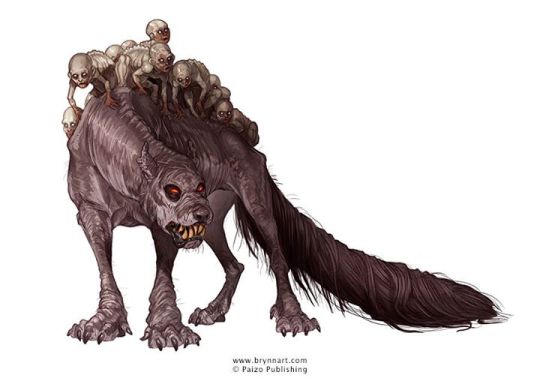
CR 8
Chaotic Evil Medium Magical Beast
Bestiary 5, pg. 238
Miserable and filled with hate, the Su stalk through thick forests they call home in search of meat and insects to quiet their irritating, mewling young, for whom they hold paradoxical amounts of disgust, envy, and adoration. The disconcertingly humanoid Whelp Family the beasts carry on their back are their own offspring, creatures with immense psychic power but no ability to use it without their parent’s direction. As a Su whelp grows, it gradually changes shape and loses access to its psionic powers, gaining the intelligence needed to use them just as they begin to slip away, something that causes them no end of horrid frustration. By the time they’re an adult, a Su has just enough psionic power to use 100ft of telepathy... and nothing else, relying on the screaming infants that crawl around their bodies--eternal reminders of what they once had but lacked the awareness to appreciate--for psychic defense.
Despite the resentment they may feel for their young, the Whelp Magic they possess is incredibly potent, though the younglings can only use their power as a cudgel with no finesse. Each Whelp (to a maximum of 6) grants their parent 3 points of Psychic Energy (max 18), and they can use these points to cast Id Insinuation II to confuse a single target, Thought Shield II to grant themselves +6 to Will saves against mind-affecting effects (bringing them to a +12 to Will), or most dangerously Mind Thrust III to deal 10d8 typeless damage to any creature with an Intelligence score. What’s worse is that due to the Whelps technically being separate beings than the Su, the parent can command them to use their psionic magic as a swift action even while it’s occupied elsewhere.
Thus it can blast two different targets for 10d8 damage, the same target twice, or inflict confusion on two targets, or any combination of offense. The Whelps can also hold concentration on a spell for their parent, allowing both uses of Id Insinuation stick if it needs them to. Scary! And unfortunately for travelers that may be traipsing through Su territory, the beasts are unable to bring themselves to directly harm their own children... so they tend to take out their fury and annoyance on any Humanoid they see, eager to have an outlet for their negativity. With a +19 to their Stealth while in forests, the ability to climb just as swiftly as they walk (40ft) for added cover, and no obvious components when using their psychic magic, a Su can remain hidden and cause a caravan to attack one another or themselves with Id Insinuation, or simply crumple up the weakest-looking creature it sees with Mind Thrust, leaving everyone else struggling to explain what the hell just happened. Though each spell normally casts 3 PE and thus restricts the Su to 6 casts each day, all of its spells can be undercast, a mechanic that allows a psychic caster to use a lesser version of a spell they know and thus use up less energy. Since there’s little difference between Id Insinuation I and II, the beast may elect to just use the first version for only 2 of its PE, stretching its daily reserve a little further. Mind Thrust II also deals a modest 5d8 damage and costs just 2 PE, though the beasts will rarely opt for less damage.
Should a Su feel confident about entering melee, or if it’s exhausted its PE for the day and is thus forced to, it’s no less dangerous. They possess Pounce and a CCB attack to make full use of it, their claws dealing 1d6+4 damage and their bite 1d8+4. Anyone successfully Grabbed by their bite is not only Raked for 1d6+4 extra damage every round the victim can’t break free, but the Su's tearing teeth also inflict 1d6 bleed damage even if the victims DO get away. Though their swift actions tend to be eaten up by their psychic spells, they can use their Prehensile Tails as a swift action instead to make a steal, disarm, dirty trick, OR trip combat maneuver against an adjacent foe without triggering an AoO, giving them significantly more complex tactics than one would expect against such a bestial creature.
Their DR 10 can only be pierced with magic, so the first order of business is typically to disarm foes that possess magic weapons (or turn such enemies against each other with confusion), though tripping foes so they have to waste time getting back up (robbing them of their Full-Attack) is also viable. Pilfering valuable-looking trinkets and potions and having them off to the Whelps for them to investigate/destroy/use is another reason not to near the mischievous and malicious carnivores while wearing your potion belt. Dirty trick is the most versatile, robbing a target of one of its senses for several rounds or inflicting all manner of negative status ailments... like just whacking some poor soul in the family jewels to sicken them before following it up with a Full-Attack or a Mind Thrust while they’re still reeling. Hey, it’s a dirty trick for a reason! And Su have no desire nor need to fight honorably. They’re here for a meal! ...and to let off some steam.
You can read more about them here.
94 notes
·
View notes
Text

8-Bit Bestiary: Sand Serpent
(Originally created 14.10.24 for Pixel Dailies theme "snake")
69 notes
·
View notes